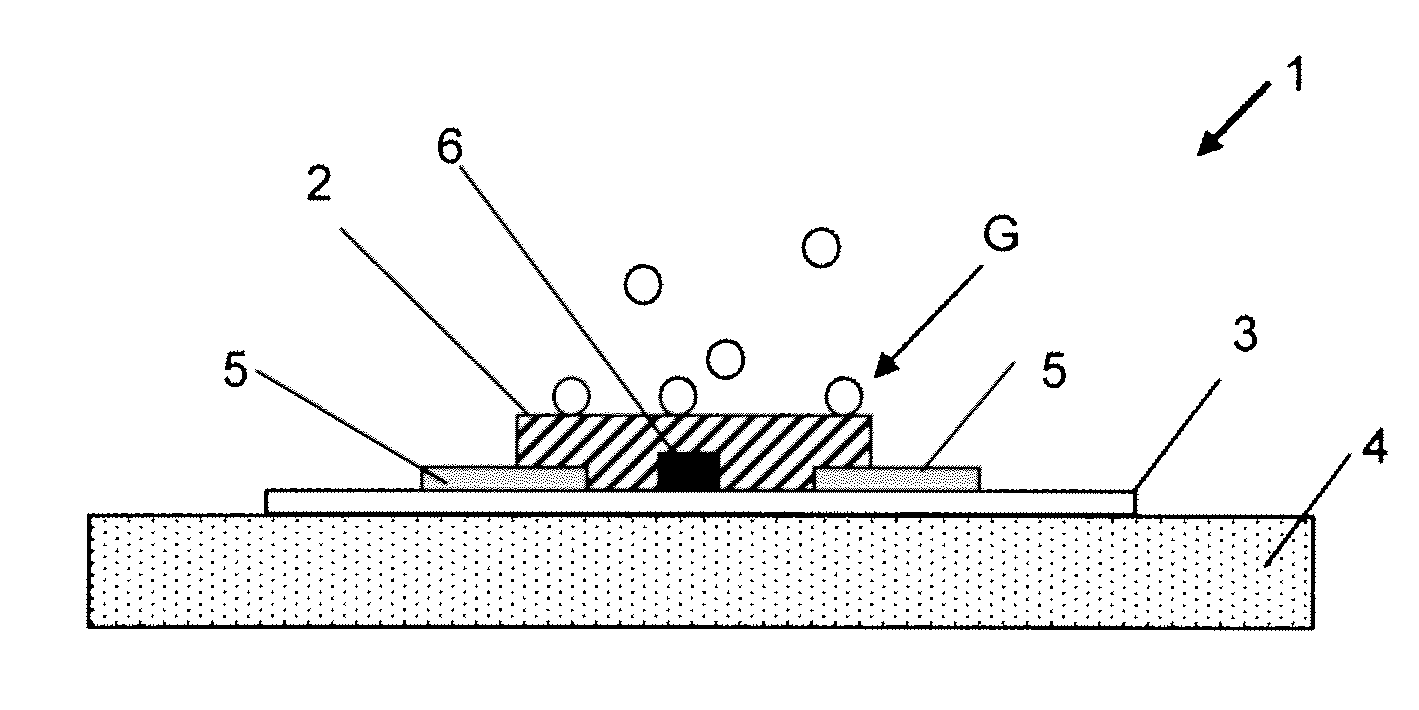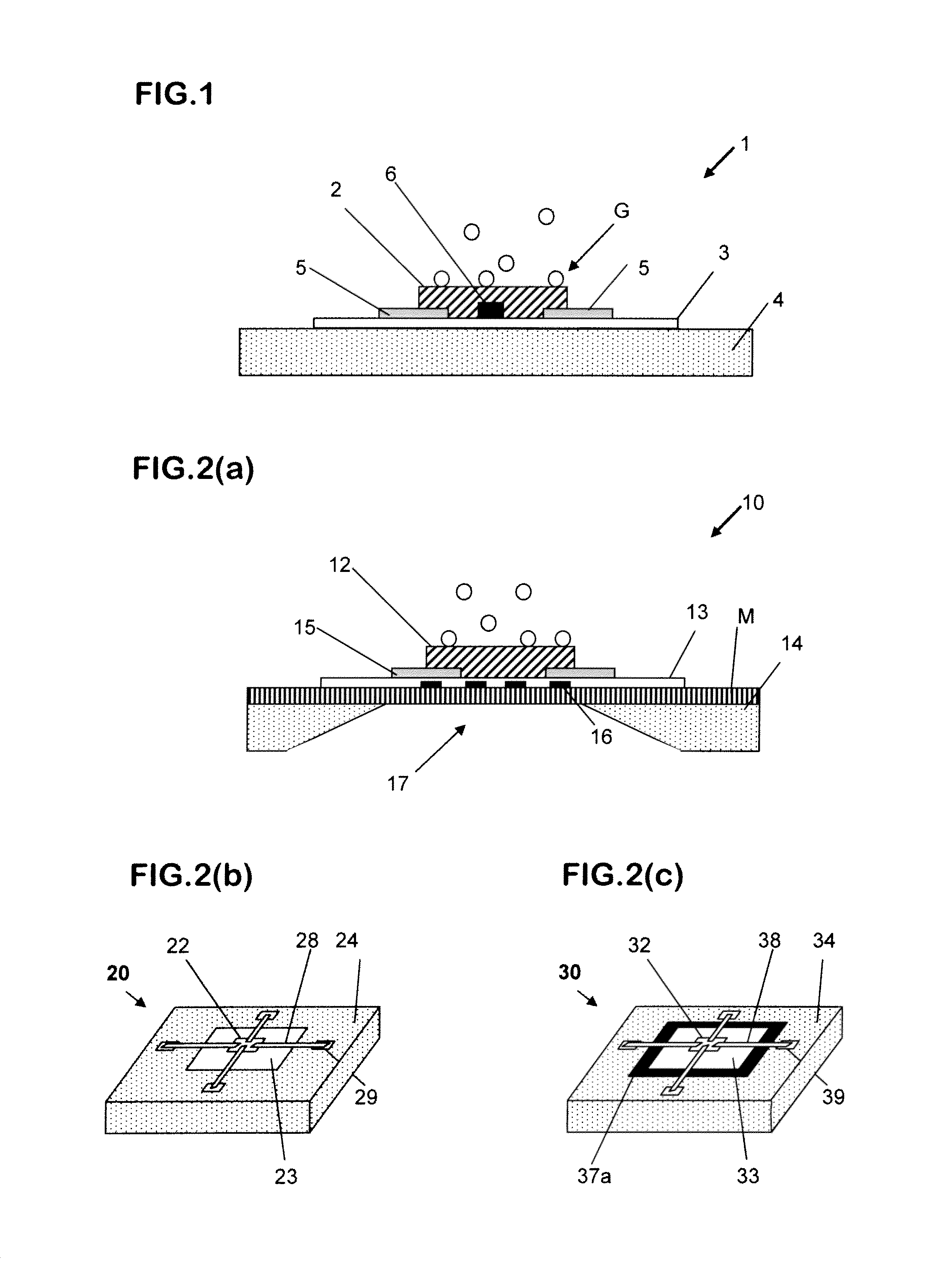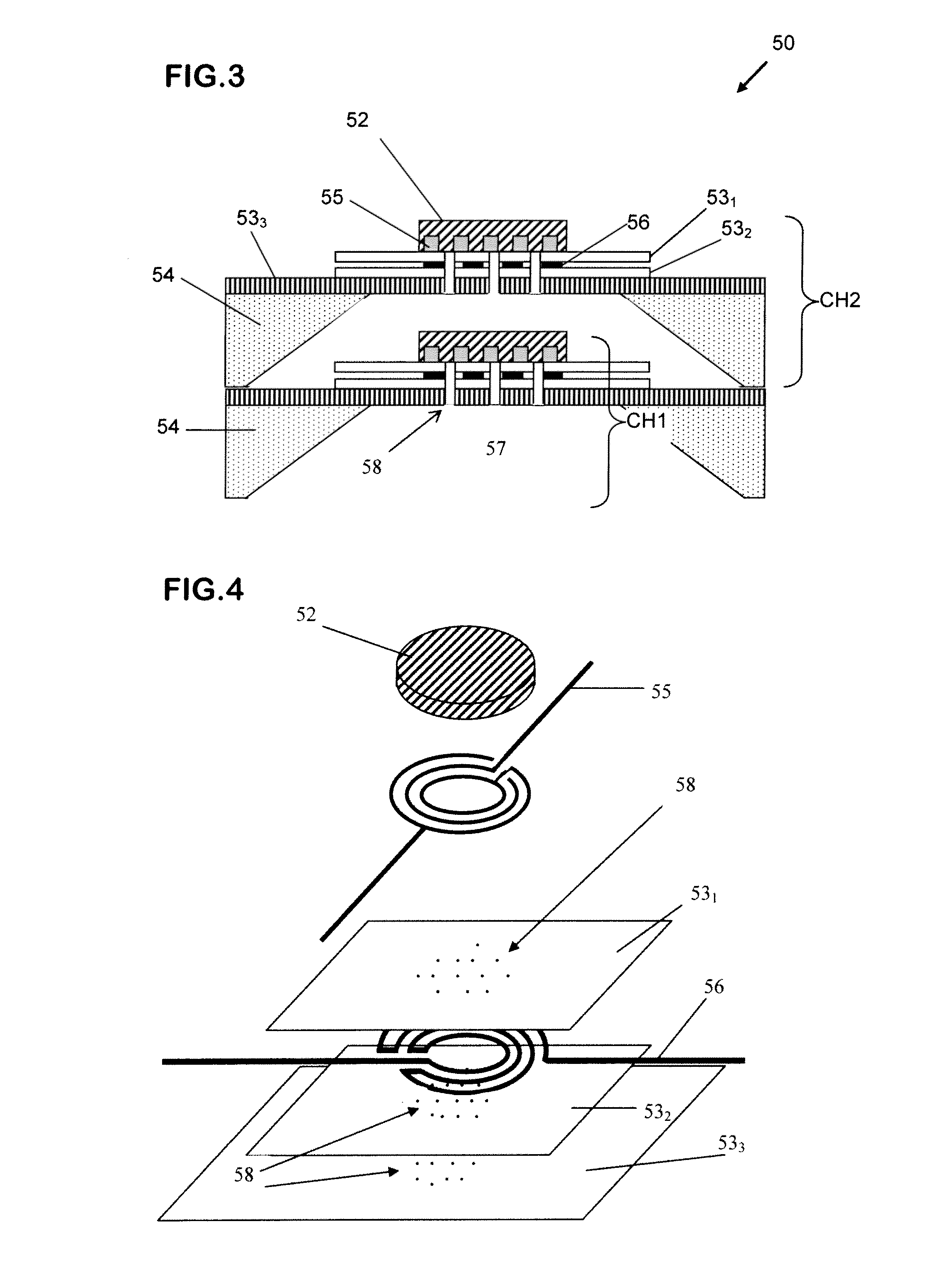Chemoresistor Type Gas Sensor having a Multi-Storey Architecture
a gas sensor and multi-storey technology, applied in the field of gas sensors, can solve the problem of low selectivity of such sensor elements
- Summary
- Abstract
- Description
- Claims
- Application Information
AI Technical Summary
Benefits of technology
Problems solved by technology
Method used
Image
Examples
first embodiment
[0083]FIG. 9 illustrates a compact device incorporating a gas sensor according to the invention as well as circuitry to drive the gas-sensing elements and process their output. This compact device takes the form of a capsule roughly 1 cm by 2.5 cm in size yet including multiple gas-sensing elements (notably, two to seven stacked gas-sensing elements).
[0084]FIG. 10 illustrates a device in which two gas sensing elements are mounted n series using a single supporting substrate 54. It is advantageous to use different materials for the sensing layers 52, 52′ of the two gas sensing elements.
[0085]FIG. 11 illustrates a gas sensor device in which the series-connected gas sensing elements of the multi-storey structure are spaced from each other, possibly with intervening elements (indicated by the box in dashed lines in FIG. 11). This architecture differs from known devices (containing a series of chambers through which gas passes, with different sensors in each chamber), by virtue of the fa...
second embodiment
[0102]A further measurement can be generated in embodiments of the present invention by paying attention to the energy that is needed to maintain the sensing layer (or the selectively-activatable material) at a particular temperature. More particularly, some of the reactions that occur when a gas contacts the sensing layer (or the selectively-activatable material) may be endothermic whereas others may be exothermic. The heat changes during such reactions alter the amount of energy that is needed by the heater in order to keep the relevant sensing layer (or selectively-activatable material) at the nominal operating temperature. This alteration can be detected and used as an additional indication of the properties of the gas sample being analysed. Moreover, this technique can be applied in the invention described below.
[0103]Various interesting new techniques based on the use of pulsed UV light can be applied in order to increase the sensitivity and selectivity of the above-described ...
PUM
| Property | Measurement | Unit |
|---|---|---|
| temperature | aaaaa | aaaaa |
| thickness | aaaaa | aaaaa |
| thickness | aaaaa | aaaaa |
Abstract
Description
Claims
Application Information
 Login to View More
Login to View More - R&D
- Intellectual Property
- Life Sciences
- Materials
- Tech Scout
- Unparalleled Data Quality
- Higher Quality Content
- 60% Fewer Hallucinations
Browse by: Latest US Patents, China's latest patents, Technical Efficacy Thesaurus, Application Domain, Technology Topic, Popular Technical Reports.
© 2025 PatSnap. All rights reserved.Legal|Privacy policy|Modern Slavery Act Transparency Statement|Sitemap|About US| Contact US: help@patsnap.com



